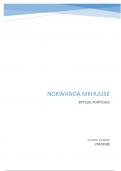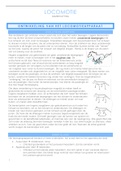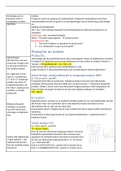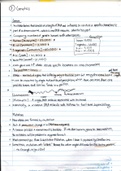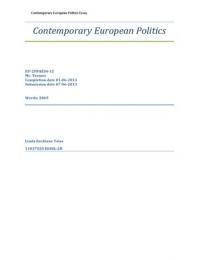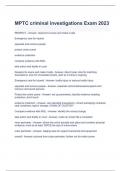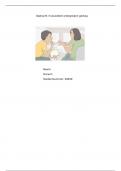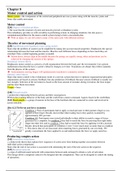Media/Society (6th edition)
- Explanation/association of concept
Key practices/factors
— Example
Sorts of particular concept
Problem/negative effect
Bold + blue: concept, also in lecture
Blue: concept, not mentioned in lecture
,Chapter 1. Media/Society in a Digital World
Mass media are pervasive/ubiquitous: everywhere, affects life
Mass media are dynamic: continuity and change in the media industries: changing
landscape of media equipment (e.g. proliferation of smartphones leads to decline of
telephone landlines)
Theory: systematic explanation for the observations that relate to a particular aspect
of life, allow us to make sense of reality (patterns, evidence), dynamic
Reasons for media studies:
- Many popular assumptions about effects of media
- Media have become a dominant social institution in our society (education,
politics)
- Mass media are a powerful socializing agent (learning process; norms, values)
Communication media: the different technological processes that facilitate
communication between (and are in the middle of) the sender of a message and the
receiver of that message, means through which a message is conveyed
— Print, telephony, radio, television, film, internet etc.
Interpersonal media one-to-one contact, involve a single known receiver, very
interactive; back-and-forth dialogue
Traditional mass media: one-to-many contact, involve a potentially large and
unknown audience (but known sender), limited or no interaction; one-way
communication
Internet-based communication/’new’ media: involves both interpersonal and
mass media, known senders and receivers but also anonymity, distinction
between producers and receivers is blurring, interactive
Simplified Model of Media and the Social World
Human agents are the medium through which
media content and technology affect each other,
the relationship between the media industry and
most media users is mediated by content,
technology and other factors in the social world
Any single component of the model
simultaneously relates to other components
Social world: all the social elements not included in the four main boxes
(e.g. role of government)
Users/reader instead of receiver: more active role
Socialization: the process whereby we learn and internalize the values, beliefs, and
norms of our culture and, in doing so, develop a sense of self
The sociological perspective: encourages us to see and understand the
relationships between individuals and the broader social context in which they live,
because people collectively create the features of society, those creations in turn
influence how people act
, Agency and structure
Agency: independent action, intentional and undetermined human action,
autonomous and independent choices (e.g. personal style)
Structure: constraint of human action, any recurring pattern of social behavior, not
so autonomous, patterns, existing theories (e.g. genre, commerce)
Infinite tension between structure and agency:
- Structure constrains agency
- Human agency partially alters/shapes structure or maintains social structure
(e.g. new genre developed from personal style)
In the media
- Relationships among institutions: between the media and other
social/economic/political institutions,
legal and economic limits within which the media industry must operate, but
also acting on its own, influencing other social institutions
- Relationships within an institution: social positions, roles, practices,
how much autonomy media personnel have in doing their work
- Relationships between an institution and the public:
how media content and technology potentially influence users and how users
can impact the media industry and its content



